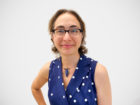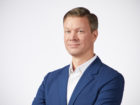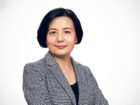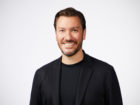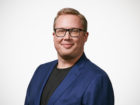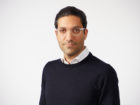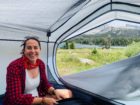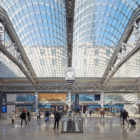We recently announced the promotion of our newest principals—eight global leaders who exemplify the qualities that SOM brings to every project: international perspectives, deep expertise, and a commitment to working across disciplines. We’ve asked each of them for insights on their career journeys and a glimpse of what they’re working on now.
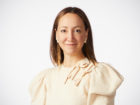
Ece Calguner Erzan
Best career advice?
I was five years old when my father told me that I should do what I love—that if I chose to do what I am passionate about, I would be able to succeed. His advice stayed with me. Years later, I think of him every day when I design, because that’s when the boundaries between work and joy begin to blur.
Tell us about a meaningful experience at SOM.
It was the moment I discovered that SOM is a true “collective.” There is a creative alchemy that makes our value as a group much greater than the sum of our individual strengths. We support, complement, and inspire one another in many unexpected ways: our interior designers can offer a perspective from inside out to the team designing a building facade; our urban designers consider the human journey when creating a master plan; our engineers can propose innovative structural systems even at the scale of custom furniture.
What are you working on now?
One of our biggest ongoing projects is 4 Hudson Square, the New York headquarters for the Walt Disney Company. Our interiors team is working on the design of the building lobbies and the dining and retail spaces for the building’s ground floor. I’m continuing to work with clients in the financial industry here in New York, ranging in scale from trading floors for a leading investment bank, to amenity spaces, to a new office space for a boutique private equity firm. Together with the renovation of a Midtown office building, a corporate headquarters in Cairo, and three residential towers—in London, Paris, and Xian—my days are filled with a stimulating variety of design challenges.
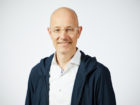
Christoph Timm
Best career advice?
Throughout my career I have worked with inspiring role models who practiced great architecture right in front of me. Be positive, curious, build networks, mentor and find mentors for yourself. Asking insightful questions is a great way to engage others.
Tell us about a meaningful experience at SOM.
A few years ago I asked David Childs if he would meet with my 7-year-old nephew who was very interested in architecture and specifically One World Trade Center. David was immediately all-in. He gave my nephew a private tour at the office and even a memento. It was priceless to see the two of them interact, both clearly having fun in each other’s company! My nephew still has David’s handwritten note and autograph displayed in his room.
What are you working on now?
As a facades specialist, I am fortunate to be involved in a broad range of interesting projects. I’ve been working on a large office development in Bangalore, the new terminal at Kansas City Airport, repositioning a classic 1970s SOM office tower in Midtown Manhattan, another new office tower at 1245 Broadway, and the LACMA expansion in Los Angeles with its fine facade detailing. Participating in pitching for new work and increasing our profile at conferences are also key priorities. And maybe most important of all: making SOM the best place at which to grow your career.
